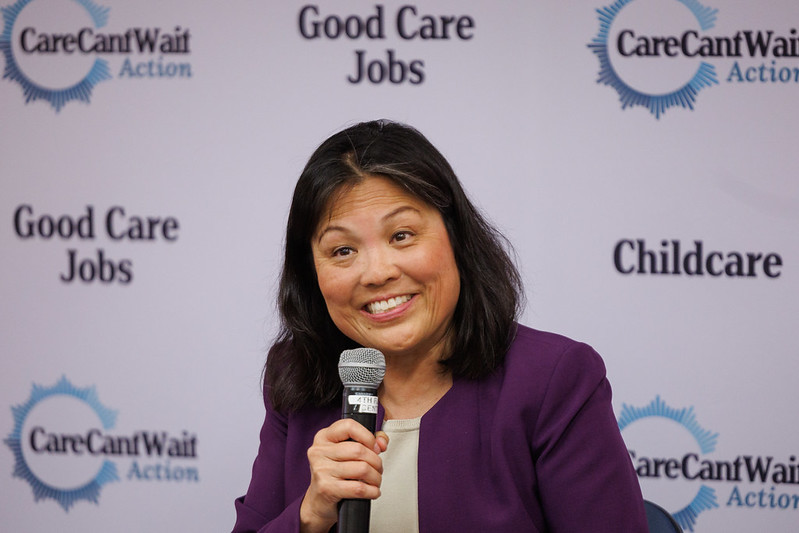
This April, the White House is commemorating Care Workers Recognition Month and the one-year anniversary of President Biden signing the Executive Order on Increasing Access to High-Quality Care and Supporting Caregivers. Today, as part our ongoing work on care, the U.S. Department of Labor, in consultation with the U.S. Department of Health and Human Services, is releasing our Guidance on Supportive Services for Child Care and Long-Term Care.
Across the United States, too many people struggle to access the affordable, high-quality care they need. High-quality early care and education is critical for the social development and wellbeing of young children. High-quality long-term care ensures that older adults and people with disabilities have dignity as they live, work and engage in their communities.
For working families, care supports are essential and enable those with caregiving responsibilities to participate in the workforce. Too often, workers without access to affordable, reliable and high-quality care struggle to enter or stay in the labor force, maintain adequate work hours or maintain productivity. One survey found that 32% of all employees had voluntarily left a job at some point during their career due to caregiving responsibilities.
As federal, state and local governments and employers look to develop and expand the workforce, they are increasingly recognizing the importance of care, especially with in demand industries like construction, manufacturing and clean energy sectors that are gaining new jobs through federal infrastructure investments. Ensuring workers have access to affordable, reliable, high-quality care will help employers increase productivity and recruit and retain workers.
A key component of high-quality workforce development and addressing the demand for workers is ensuring those who need supportive services have access to them, particularly child care and long-term care. Supportive services help individuals, and especially people facing systemic barriers to employment, enroll in and complete training and access employment opportunities. In order to ensure businesses and grant recipients deliver on federally funded projects, federal agencies are identifying federal funds that allow recipients to provide supportive services, especially for care, to their workers.
The guidance released today is designed to help federal agencies, recipients of federal funds, employers, workforce development entities and other stakeholders in the care community to make thoughtful investments in child care and long-term care to support workers. The guidance includes:
- Template language for federal agencies looking to include care as a supportive service in their funding opportunities
- A checklist to evaluate funding applications and project details related to supportive services and care strategies.
- Potential roles for various stakeholders in the care ecosystem who may receive or benefit from federal investments related to supportive services for care
- Care supply and demand considerations that recipients of federal funds and employers should factor into planning
- Examples strategies for recipients of federal funds and employers to support workers with care
- How recipients of federal funds should ensure their care investments improve child care workers’ wages and job quality
The Labor Department and HHS will continue to provide technical assistance to our federal partners, recipients of federal funds, and other stakeholders to ensure support services for care are effective for workers on federal projects, care providers and the care workforce.
Diana Boesch is the Chief of Staff in the Office of the Assistant Secretary for Policy. Elyse Shaw is a Policy Analyst in the Women’s Bureau.

 U.S. Department of Labor Blog
U.S. Department of Labor Blog